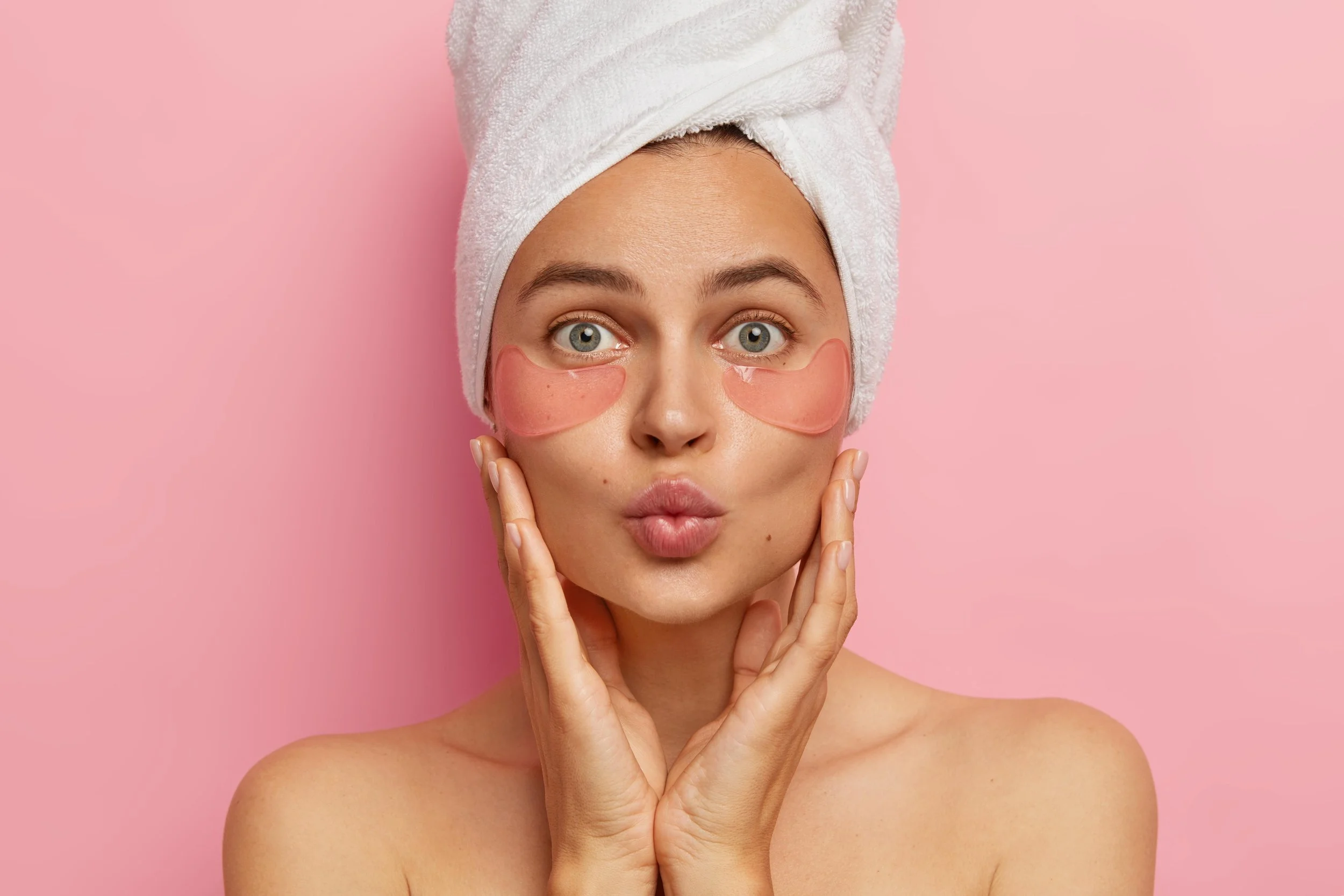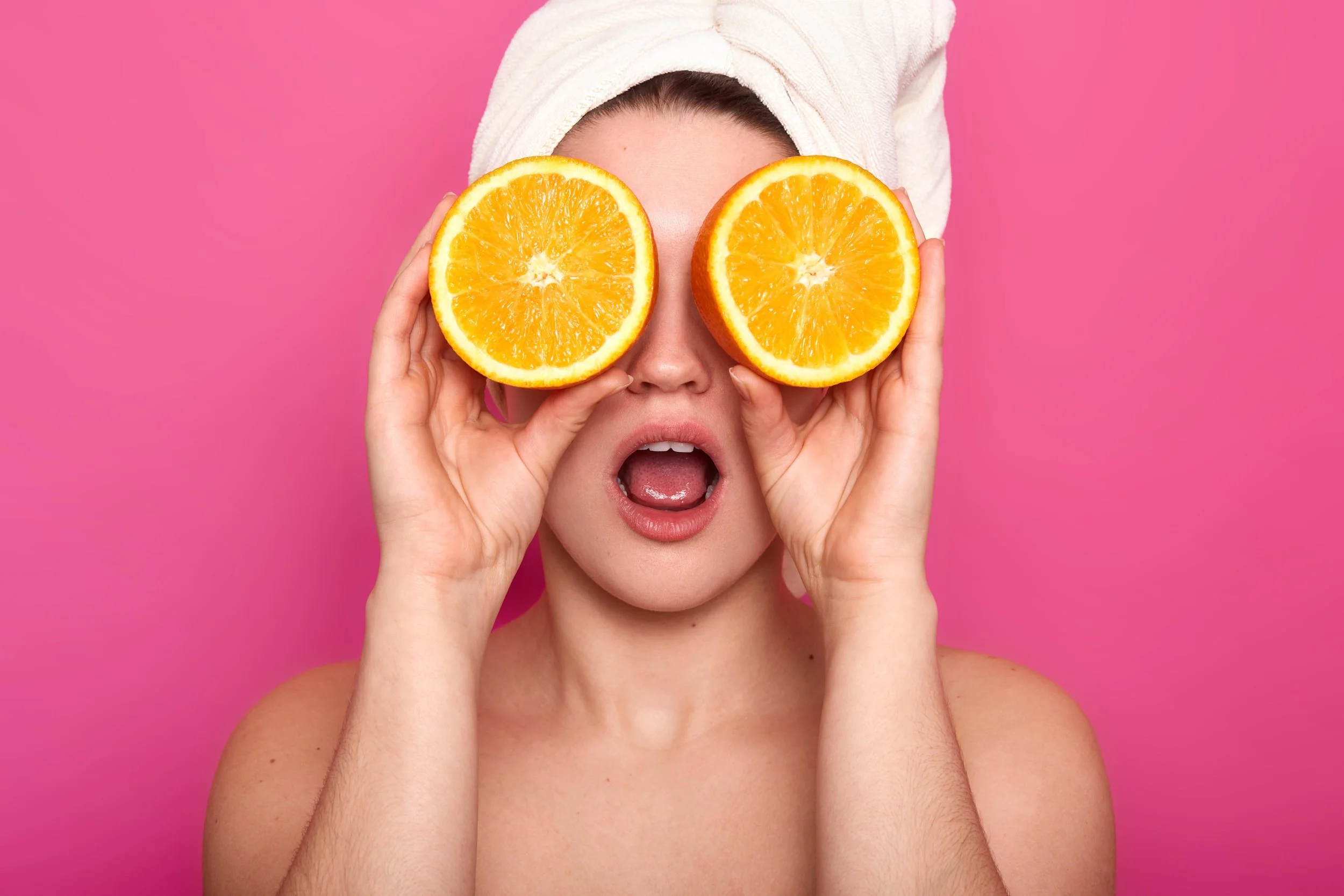7 Science-Backed Ways to Brighten Dull Skin (That Actually Work)
Disclosure: This post contains affiliate links. As an Amazon Associate, I earn from qualifying purchases—at no extra cost to you. I only recommend products I truly believe in.
Ever catch your reflection and think, “When did my glow peace out?” It’s not just you. Stress, sun exposure, late nights, or that fourth cup of coffee (no shade) can leave your skin looking flat, flaky, and... just kinda blah.
The good news? Your glow isn’t gone — it’s just hiding. And we’re bringing it back with real, research-backed skincare — not sketchy TikTok hacks. In this post, you’ll find 7 dermatologist-approved, science-supported ways to brighten dull skin, support cell turnover, and bring back that lit-from-within glow — no filter required.
Let’s glow.
🧪 What Actually Causes Dull Skin?
Dullness happens when dead skin builds up, your skin loses hydration, and cell turnover slows down — all of which mess with how your skin reflects light. Oxidative stress and collagen loss make things worse (Abhishek et al., 2023; Boo, 2022).
Translation: if your skin isn’t smooth, hydrated, and supported structurally, your glow disappears.
Let’s bust a few common myths:
Myth: Chugging water makes you glow.
Staying hydrated internally is important, but studies show it doesn’t dramatically affect skin unless you’re already dehydrated (Sahawneh, 2024). Topical hydration is where the magic happens.Myth: Scrub harder.
Nope. Over-exfoliating wrecks your skin barrier and can actually make dullness worse (Lee & Oh, 2023).Myth: Expensive skincare works better.
Research shows that ingredients like vitamin C, niacinamide, and retinoids are just as effective in affordable products as in luxury lines (Boo, 2021, 2022). It’s about what’s in the bottle — not the brand name.
✨ 1. Exfoliate — But Be Gentle
Dead skin buildup = dull skin. Exfoliation helps shed those clingy old cells and reveal smoother, more reflective skin underneath.
AHAs like glycolic and lactic acid work on the skin’s surface
BHAs like salicylic acid go deeper, clearing out pores
And good news: AHAs don’t just exfoliate — they stimulate collagen too, which improves glow and firmness (Lee & Oh, 2023). But go easy — overdoing it can irritate your skin and increase dullness.
✅ Start 1–3x per week. Always moisturize and wear SPF after exfoliating.
🧴 Top Picks
-
🧴 Pixi Glow Tonic
✨ 5% glycolic acid to gently exfoliate and boost radiance
👉 Check price on Amazon -
🧴 The Ordinary Lactic Acid 5%
✨ Gentle AHA with added hyaluronic acid to hydrate as it exfoliates
👉 Check price on Amazon -
🧴 Paula’s Choice 2% BHA Liquid Exfoliant
✨ Salicylic acid exfoliant that clears pores and evens skin tone
👉 Check price on Amazon
🍊 2. Use a Vitamin C Serum
Vitamin C (especially L-ascorbic acid) is a glow MVP — it brightens skin by slowing melanin production, boosts collagen, and fights oxidative damage from pollution and UV rays (Boo, 2022).
Studies show that 10–20% L-ascorbic acid can fade dark spots and improve skin tone and texture — and it even makes your sunscreen work harder (Ngoc et al., 2023).
🕗 Apply in the morning before moisturizer and SPF.
🍊 Top Picks
-
🍊 TruSkin Vitamin C Facial Serum
✨ Best-selling budget option with plant-based ingredients
👉 Check price on Amazon -
🍊 Timeless 20% Vitamin C + E Ferulic
✨ High-strength antioxidant trio to brighten and firm
👉 Check price on Amazon -
🍊 La Roche-Posay 10% Vitamin C Serum
✨ With salicylic acid to refine texture and brighten skin
👉 Check price on Amazon
🧴 3. Niacinamide: The Multi-Tasking Glow Booster
Niacinamide (vitamin B3) is one of the most well-researched, well-tolerated skincare ingredients around. It evens tone, minimizes pores, reduces redness, and strengthens your skin barrier (Boo, 2021).
In one study, 5% niacinamide improved brightness and faded hyperpigmentation within four weeks — and it also helped skin stay hydrated longer (Ngoc et al., 2023).
🌙 Use morning or night — niacinamide plays well with most ingredients.
🧴 Top Picks
-
🧴 The Ordinary Niacinamide 10% + Zinc 1%
✨ Balances oil and brightens skin without irritation
👉 Check price on Amazon -
🧴 Paula’s Choice 10% Niacinamide Booster
✨ Lightweight booster that plays well with others
👉 Check price on Amazon -
🧴 CeraVe PM Moisturizing Lotion
✨ Niacinamide + ceramides for hydration and calm skin
👉 Check price on Amazon
🌙 4. Retinoids: Cellular Turnover = Radiance
Retinoids (like retinol or adapalene) work by boosting cell turnover — which helps remove dull surface skin and build collagen underneath (Zouboulis et al., 2019).
Clinical trials show retinoids reduce rough texture, discoloration, and fine lines over time (Tsai & Chien, 2022). Just be patient — they’re powerful, but not overnight magic.
🌛 Use at night, 2–3x/week to start. Always use SPF in the morning.
🌙 Top Picks
-
🌙 CeraVe Resurfacing Retinol Serum
✨ Retinol + ceramides to fade spots and build barrier strength
👉 Check price on Amazon -
🌙 Differin Gel (0.1% adapalene)
✨ Prescription-strength power, now over-the-counter
👉 Check price on Amazon
💧 5. Hydration — Inside and Out
If your skin is dehydrated, it doesn’t reflect light — it absorbs it. The result? Dull, rough, tired-looking skin.
While internal hydration helps overall skin function, research shows topical hydration is the real glow-getter (Sahawneh, 2024; Qassem & Kyriacou, 2019).
Hyaluronic acid (HA) is a superstar humectant — it pulls water into the skin and plumps it up. Clinical studies show topical HA improves smoothness, elasticity, and hydration in just a few weeks (Ngoc et al., 2023).
💦 Apply HA to damp skin, then lock it in with moisturizer.
💧 Top Picks
-
💧 The Ordinary Hyaluronic Acid 2% + B5
✨ Affordable, effective, and beginner-friendly
👉 Check price on Amazon -
💧 Neutrogena Hydro Boost Gel Cream
✨ Lightweight and plumping with HA
👉 Check price on Amazon -
💧 CeraVe Moisturizing Cream
✨ Hydration + ceramides = barrier magic
👉 Check price on Amazon
🥗 6. Eat Your Antioxidants
Healthy skin starts from within — and a diet full of antioxidants can help you glow from the inside out. Vitamins A, C, E, selenium, and carotenoids protect against oxidative stress and support skin regeneration (Abhishek et al., 2023).
Fun fact: Carotenoid-rich foods like sweet potatoes, carrots, and spinach can literally give your skin a natural golden glow that’s perceived as more attractive (Ngoc et al., 2023). Wild, right?
🥗 Glow Tip: Snack on berries, nuts, and leafy greens daily. Bonus: green tea and dark chocolate also help.
☀️ 7. Sunscreen: The Ultimate Glow Protector
Let’s be real — nothing ruins a glow faster than UV damage. Sun exposure breaks down collagen, worsens pigmentation, and causes rough texture (Tsai & Chien, 2022; Seck et al., 2023).
Derms agree: broad-spectrum SPF 30+ every morning is non-negotiable — even indoors. Studies show daily sunscreen can not only protect, but visibly improve signs of dullness and photoaging over time.
🧴 Apply daily — and reapply if you’re outside or near windows.
☀️ Top Picks
-
☀️ La Roche-Posay Anthelios SPF 50
✨ Lightweight broad-spectrum daily sunscreen
👉 Check price on Amazon -
☀️ Supergoop! Unseen Sunscreen SPF 40
✨ Invisible, primer-like finish that layers like a dream
👉 Check price on Amazon -
☀️ EltaMD UV Clear SPF 46
✨ Niacinamide-rich, perfect for sensitive or acne-prone skin
👉 Check price on Amazon
⚠️ Common Mistakes That Sabotage Glow
❌ Over-exfoliating – leads to barrier damage and inflammation (Lee & Oh, 2023)
❌ Too many actives – vitamin C + retinoid + acids = overload
❌ Skipping moisturizer or SPF – hydration and protection are the foundation
❌ Giving up too soon – most routines take 4–6 weeks to show results
❌ Ignoring lifestyle factors – lack of sleep and stress show up fast (Sahawneh, 2024)
💬 Final Thoughts
Your glow isn't gone — it's just waiting for you to show up for it. Whether you start with a vitamin C serum, a hydrating moisturizer, or just commit to daily SPF, consistency is everything.
Glow-ups aren’t about perfection. They’re about small, science-backed choices that build over time. Choose what works for you, listen to your skin, and give it the care it deserves.
✨ Your glow-up? It's already in motion.
Want to dig deeper?
If dryness is driving the dullness, start with targeted hydration — this dry-skin guide covers the best ingredients.
Oils can add slip and shine without greasiness when used right; here’s when a face oil actually helps.
Want a 15-minute radiance boost you can see? Pick a hydrating mask from our favorites.
📚 References
Abhishek, S., Anjali, T., & Lekshmi, S. (2023). Ecoskinomics: Exploring the ecological factors shaping skin health. IEEE Xplore Conference Proceedings.
Boo, Y. C. (2021). Mechanistic basis and clinical evidence for nicotinamide (niacinamide) in controlling skin aging and pigmentation. Antioxidants, 10(8), 1315.
Boo, Y. C. (2022). Ascorbic acid (vitamin C) for dermal collagen and antiaging. Antioxidants, 11(9), 1663.
Lee, J. D., & Oh, M. J. M. (2023). Medical skin care. In Lasers in Dermatology (pp. 35–46). Springer.
Ngoc, L. T. N., Moon, J. Y., & Lee, Y. C. (2023). Antioxidants for improved skin appearance. International Journal of Cosmetic Science, 45(3), 299–314.
Qassem, M., & Kyriacou, P. (2019). Modern techniques for skin hydration assessment. Cosmetics, 6(1), 19.
Sahawneh, P. (2024). Factors influencing skin health from within. Journal of Integrated Health, 30(1), 156–163.
Seck, S., Hamad, J., Schalka, S., & Lim, H. W. (2023). Photoprotection in skin of color. Photochemical & Photobiological Sciences, 22(2), 441–456.
Tsai, J., & Chien, A. L. (2022). Photoprotection for skin of color. American Journal of Clinical Dermatology, 23(2), 195–205.
Zouboulis, C. C., et al. (2019). Skin aging, prevention, and local treatment. Clinics in Dermatology, 37(4), 365–372.



